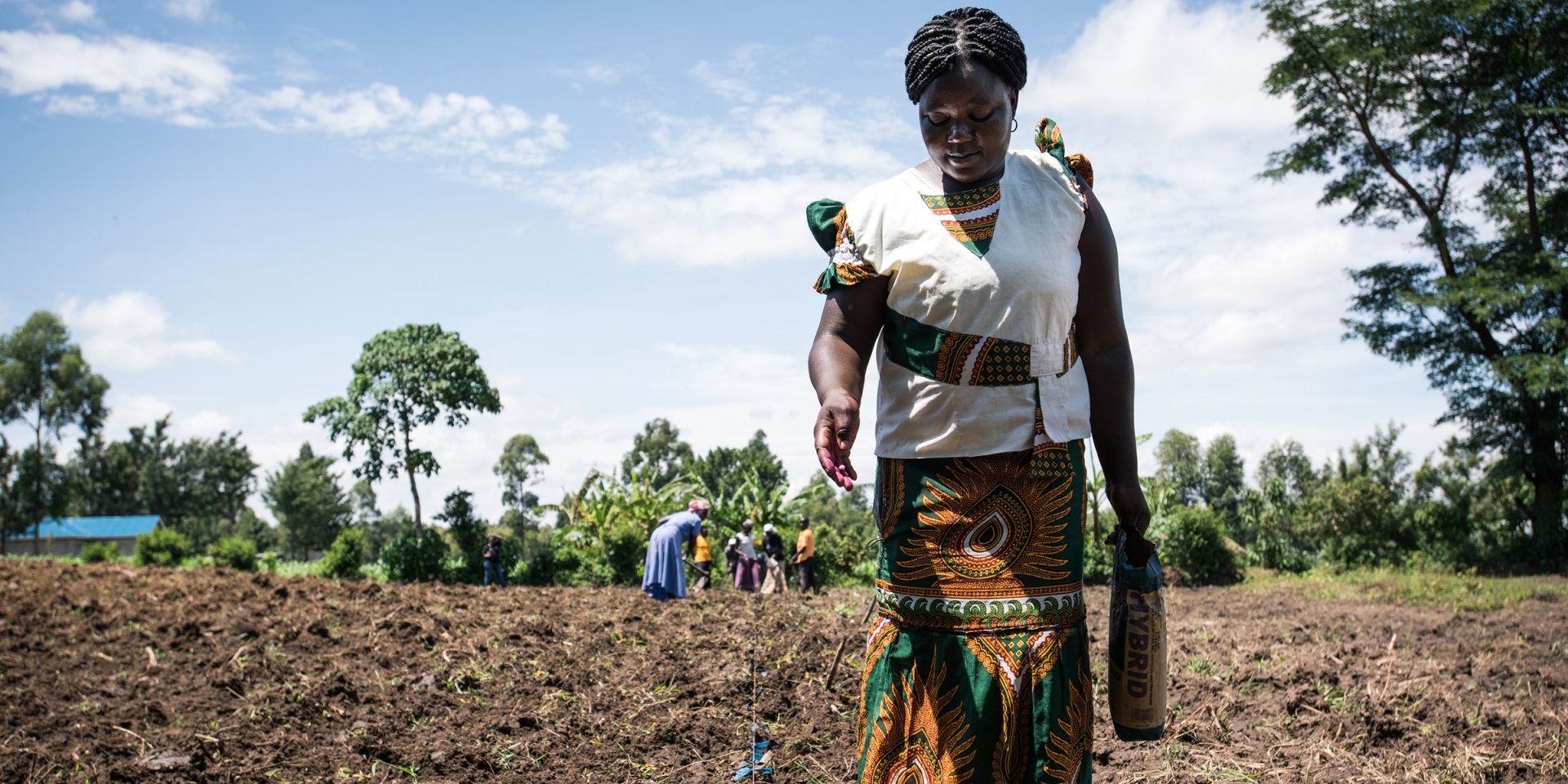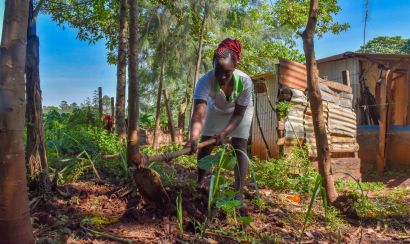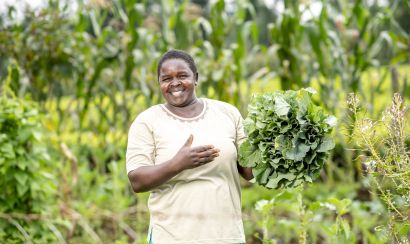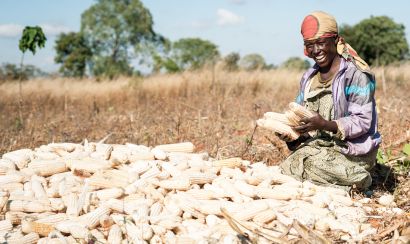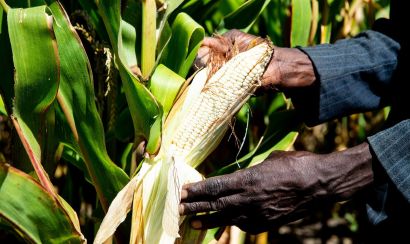The Journey of a One Acre Fund Maize Seed
Years of Effort Put Into One Small Seed
Eunice Kuteli steps carefully through her field, pausing periodically to drop a small pink seed into a meticulously dug hole. She relies on the seed One Acre Fund provides for her livelihood; it holds the potential to grow into a healthy maize plant that can be harvested and eaten. Eunice might not know it, but that seed is the result of years of work.
One Acre Fund recognizes that improved farm inputs (seed and fertilizer) are essential to increasing farm yields. We invest tremendous resources to ensure that the seeds we offer our farmers are of the highest quality. Every one of the seeds we distribute to our farmers in Kenya has a long journey from development to production, procurement, delivery, and planting.
Seed Development and Creation of Hybrids
While farmers always have the option of reusing local seed from previous harvests, One Acre Fund encourages farmers to invest in hybrid maize seeds every year. Local seed has degraded in quality over time, and most local seed that farmers plant has a low yield potential.
In contrast, hybrid seeds are bred to improve the plants they produce. Crops from hybrid seeds are engineered to produce a better yield, to improve the appearance of plants, and to resist disease. Although farmers pay more for hybrid seed, the higher yields more than make up for the higher price.
Seed companies are always working to develop new hybrid maize varieties. Hybrid seeds are a product of two or more parent seed lines. The cross-pollination of two lines is a natural process, which the breeder guides to achieve the desired result. The chart below shows the process of creating seed from four different parent lines, which is called a “double-cross hybrid."
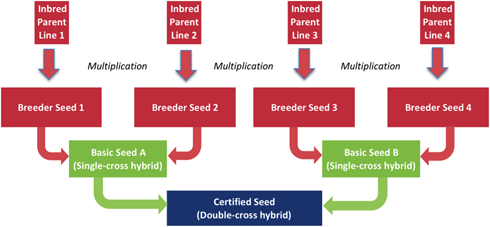
- Maize seed breeders select parent lines that have desirable characteristics and multiply these varieties to produce a large stock of breeder seed.
- Breeder seed is crossed with another variety to develop basic or foundation seed.
- Two basic seed varieties are crossed to develop a double-cross hybrid, which exhibits characteristics from all four parent lines.
Once a new double-cross hybrid is developed, it must go through National Performance Trials, a two-year process during which representatives from government and research institutions determine whether the new variety is superior to existing varieties and if it should be released for public use.
Mass Production
Once the National Performance Trials committee releases a seed variety, it can be multiplied and sold commercially. Seed companies either multiply the seed on their own land, or contract registered farmers to do so on their behalf.
Farmers plant the seed normally. At the end of the growing season, this maize is harvested, de-husked, and the cobs are dried, shelled, and sorted at a central processing facility. New hybrid seeds have been produced, but there are still a few more steps in the process before the seed is ready to be sold to farmers.
A sample is taken for testing to ensure that the maize seed is high quality. The seed is then treated with insecticides, fungicides, or a combination of both to ensure that the seed retains its quality when stored. The seed is dyed a distinctly bright color to prevent people from accidentally eating it. The maize seed One Acre Fund distributes to farmers can be pink, red, or sometimes green.
Finally, seed is packaged into different-sized bags and is ready to be sold.
Procurement
One Acre Fund is customer driven, so we only buy seed varieties that our farmers request. Our seed catalogue contains 10 popular maize varieties from various companies in Kenya.
Once we have an estimate of farmer demand for each variety, we place our orders. Each year, we work with about five different companies to procure maize seed. Seed is then delivered to our warehouses in small trucks, and our staff carefully records all deliveries. We store thousands of tons of product in our warehouses prior to input delivery, including hundreds of tons of seed.
Input Delivery
Input delivery is one of the busiest and most exciting times of the year. It requires a lot of planning by our field teams and is a huge logistics operation. This year in Kenya, we distributed 128 metric tons of maize seed to 37,000 farmers at 538 drop points using 378 trucks – all in the course of two and a half weeks! (We have over 60,000 clients this year, but not everyone was eligible to take a maize seed and fertilizer loan due to the risk posed by a new maize disease).
Farmer groups come to pre-established drop points on their assigned day. After a prayer and sometimes a One Acre Fund song, field officers conduct several trainings to make sure that the best planting techniques are fresh on farmers’ minds.
After the training, every farmer receives the packages of seed, fertilizer, and other planting materials.
After years of research, development, testing, and multiplication, now farmers like Eunice are armed with the improved seeds they need to produce a great harvest! Seed is one of the most profitable investments that a smallholder farmer can make. For a modest sum of money, a farmer has the opportunity to multiply her yield several times through the use of improved seed varieties.
